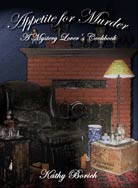Deconstructing Sherlock Holmes: A Step Too Far?

"Come, Watson come. The Game’s afoot." Sir Arthur Conan Doyle
In 1891 Sir Arthur Conan Doyle created Sherlock Holmes, the enigmatic detective, and he has been fascinating and frustrating readers ever since.
A proper Victorian, Holmes was a detached observer of the human condition. He was in this world but not of it, and to our worldly psyches, that condition has been difficult to comprehend.
While Doyle and the Holmes character himself wanted his stories to be case studies in deductive methods, it has been the eccentricities and personal foibles of the consulting detective that have been the focus of most recent reincarnations on screen.
Gay or Pining for a Lost Love
The area of most concern has been Holmes confirmed bachelorhood and his apparently asexual nature. That such a being could exist appears to be baffling to filmmakers, who have various alternate explanations. Some, not aware of the long standing Victorian tradition of bachelors sharing rooms, suggest Homes and Watson are a gay couple, while others posit an early lost love as his reason for remaining unwed. The most recent film depictions have focused on Irene Adler, a female adversary mentioned only in Doyle’s very first of fifty-six tales, as the object of Holmes’ passion.
Sherlock Holmes the Druggie
Another aspect that has received some attention is Doyle’s description of Holmes' occasional use a of a seven percent solution of cocaine, a practice that was neither illegal nor initially frowned upon in Victorian times until the problems with addiction were discovered.
For the most part, I have enjoyed these new interpretations and even used Doyle’s own writing and history to defend departures from the Holmes cannon:
An Early Defense:
Even if you are a purist member of the Baker Street Irregulars, or Austin’s own Waterloo Station, with whom I’ve been know to consort, there is enough of the old Sherlockian essence in the newer releases to please all but the most staunch.
And let’s face it. Even Sir Arthur Conan Doyle had a less than reverential attitude toward his creation, whom he viewed as a bowing baritone who refused to leave the stage. This attitude tuned downright lethal when he killed off the preening detective in a final battle with his Nemesis Dr. Moriarty at the ill-famed Reichenbach Falls. Only ten years later did Doyle answer the calls of avid fans and the lure of $5000 a story to resurrect the dead detective.
So let’s not scorn these latest attempts to breath new life into a living legend. I’d prefer to say we are just honoring a well-worn tradition started by Doyle himself
Many successful reincarnations of Sherlock Holmes use Doyle’s texts as a springboard for vaulting him in new directions, just as the famed Basil Rathbone/Nigel Bruce pairing catapulted the duo into World War II Britain, where they exchanged the snap of a whip and echoing hoof beats for the rumble of a motor car.
1976: The Seven-Per-Cent Solution (Apple Strudel)

Other examples of diversions from the Holmes cannon include The Seven-Per-Cent Solution, where it takes the famed Sigmund Freud to cure Holmes’ drug addled brain of the illusion that his former mathematics instructor, Dr. Moriarty, is the Napoleon of crime.
What if the whole arch rival thing with his Nemesis Professor Moriarty is merely a figment of the “coked” up imagination of Holmes, the addict, who routinely injected himself with a seven percent solution of cocaine? Open up your mind here, purists, and have a little fun.
I mean, in your inner heart, haven’t you always thought Holmes could use a few sessions on the couch? Any man so bloodless, so steely cerebral, who shuns the fairer sex and gets his jollies out of cataloguing types of tobacco, groveling in the muck with his magnifying glass, or playing melancholy harmonies on his violin could use a little time with a shrink.
1985 Young Sherlock Holmes (Custard Tarts)

I was still on board in 1985 with Young Sherlock Holmes, which posits an early meeting between Holmes and Watson at boarding school and a poignant reason for Holmes confirmed bachelorhood in the form of lovely young thing who expires just before the credits.
The inventive romp owes a bit to Steven Speilberg, its executive producer, as well as the screen writing talents of Chris Columbus, who directed the first Harry Potter film. So don’t be surprised if somehow a dwelling suspiciously like the Temple of Doom winds up in underground London.
Purists may object to this early meeting between Holmes and Watson, since everyone knows they met much later on when Watson was recovering from wounds incurred at the Second Afghan War and agreed to share rooms at No.221B Baker Street with an “enthusiast in some branches of science.” But who could not be drawn to this “affectionate speculation,” an adventure of a lifetime that pits Holmes against one of his darkest adversaries.
2009 Sherlock Holmes (Brandied Foie de Gras Pie)

I rolled with the punches in 2009 when Robert Downey Jr. debuted as a more physical Holmes.
James Bond goes Victorian. At least that’s what the trailers would have you believe, what with the cerebral detective’s swan dive into the Thames from the high recesses of Parliament, some bloody and brutal fistfights, an errant explosion or two, not to mention Irene Adler as his very own Bond -- or should we say bondage -- girl thrown in for good measure. What’s not to like?
Irene Adler, featured in only one of Sir Arthur Conan Doyle’s stories,”A Scandal in Bohemia,” has a most prominent role in this 2009 film. The film uses Watson’s own description of her from the original work:
"To Sherlock Holmes she is always the woman. I have seldom heard him mention her under any other name. In his eyes she eclipses and predominates the whole of her sex."
Of course, our screenwriters have chosen to ignore the rest of the text, which indicates that love, and indeed, all emotions were abhorrent to Holmes’ "cold, precise, but admirably balanced mind."
Adler (Rachel McAdams) uses her feminine wiles against the smitten Holmes, a gorgeous seductress in the 007 tradition who drugs his wine and leaves him naked and trussed to a large Victorian bed with only a strategically positioned pillow to protect the modesty of the shocked hotel maid who discovers him. Holmes purists may find the image as unsettling as she does, but Downey fans such will love its saucy irreverence.
Take this new adventure in the same vein, old wine in a new bottle, but every bit as hearty, delicious, and intoxicating as ever.
2011 Sherlock Holmes: A Game of Shadows (Swiss Tart with Pine Nuts)

I fended off the purists in 2011.
"Enough of this lounging about in a purple dressing gown. Forget about filling the pipe with tobacco gleaned from the Persian slipper above the fireplace. And no more tedious interviews with pasty-faced housemaids or sniveling petty thieves. In Sherlock Holmes: A Game of Shadows we have an action-filled battle with a worthy adversary, and Holmes is the prey rather than the unruffled predator."
With the exception of the film's title, that is exactly what I wrote in 2003, more than eight years ago, long before Guy Richie ever dreamed of his steampunk Sherlock Holmes cinematic offerings. These words were, in fact, a preface to my mystery cookbook's chapter on the original Arthur Conan Doyle classic tale, “The Final Problem.”
Put me in with Jeff Meyers, who notes the purist objections but embraces the purposeful excess in this 2011 release:
While Sherlock Holmes purists will still bristle at Hollywood's reinvention of the genius detective, A Game of Shadows does what most sequels set out to do: offers bigger explosions, more elaborate stunts and grander set pieces.
2010 A Study in Pink (Cold Asparagus in Walnut Drizzle)

And finally I mention the 2010 critically acclaimed Masterpiece Theater offering A Study in Pink, which time warps a young Holmes to the present, where he is a self-described “high functioning sociopath" gleefully traipsing around modern day London on the heels of a serial killer.
It’s high octane irreverent, with revved up wit, pace, and humor. For some, the irreverent tone will be a bridge too far. They will cringe when some of the Scotland Yard skeptics call him a psychopath, or even more degrading, “the freak.” For some it may be a relief that this younger version of Holmes does not take himself too seriously, but we probably will join Mrs. Hudson in a kind of repulsion for his effusive joy as the corpses pile up.
A Step Too Far: The Real Deconstruction Begins
But that was then. This is now, and I have become less accommodating in my views. The most recent film makers have built a bridge too far, not so much reinterpreting but deconstructing the legendary detective.
2012 Elementary

This televised American version of a contemporary Holmes takes him from the BBC’s London to New York. While Holmes (Jonny Lee Miller) still has the brilliant arrogance of Doyle’s creation, he is in many ways both pathetic and dehumanized. The opening episode shows a young prostitute leaving Holmes’ apartment, a display of bondage type equipment littering his living room like a playground jungle gym, while Holmes mutters something about his needing an occasional “exchange of bodily fluids.”
Such a coldly hedonistic practice would be quite out of bonds for the original Holmes, who was devoted to his queen and seemed to accept her rather rigid moral conventions as well.
I have no problems with Watson as a female; the lovely Lucy Liu is one of the bright spots in this new series. But her role as a “sober companion” for Holmes as a recovering addict is disheartening. That and the fact Holmes’ estranged father has hired her makes our detective even the more dependent and pathetic. Fortunately, the series has improved. Holmes appears to be successfully overcoming his addiction and he has taken Watson on as his apprentice detective. The episodes now concern their cases at least as much as their personal lives and are intellectually challenging as well.
The BBC’s Sherlock: Series 2

Unfortunately, the British contemporary Holmes is devolving. I am a little late to comment on 2012’s Series 2, but the episode I recently watched was disconcerting to say the least. Again, the fixation on Irene Adler in “A Scandal in Belgravia” loosely based on Doyle’s “A scandal in Bohemia.” Loosely based, indeed! Irene Adler, a woman of intellect, beauty, and integrity in Doyle’s tale is now “a ruthless and brilliant dominatrix who also trades in classified information extracted from her rich and powerful clients.”
Her costumes or lack thereof seem for prurient interest only. The plot cascades through a jarring set of only tangentially linked episodes ripped out of sequence in time and space. One can’t help but picture the writers as sneering adolescents smugly aware of their so-called brilliance, particularly in the parade of prior cases that are word plays based on Doyle’s real ones.
“The Geek Interpreter” (“The Greek Interpreter”)
“The Speckled Blonde” (“The Speckled Band”)
“The Navel Treatment” (“The Naval Treaty”)
Let us hope that like America’s “Elementary” the BBC’s “Sherlock” will regain its footing in Series 3, due out in late 2013 or 2014 for those of us across the pond.



 Featured
Featured